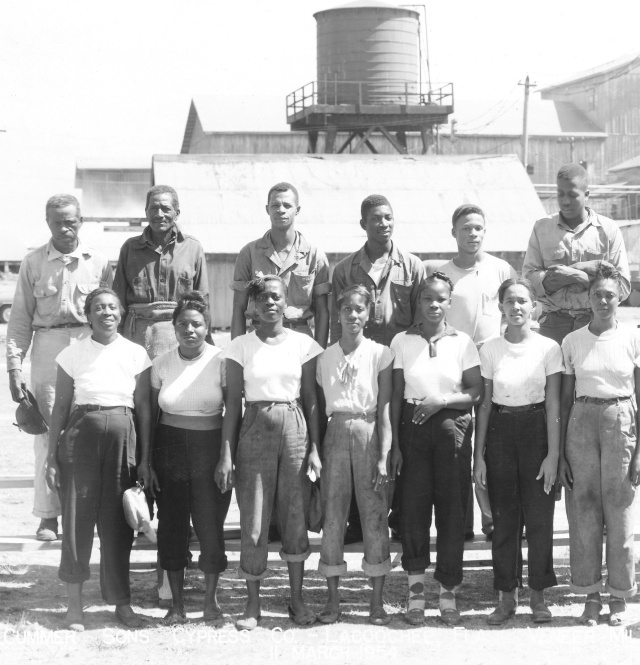HISTORY OF PASCO COUNTYLacoocheeTurning Logs Into Veneer By BUDDY WEEKS The Crate Mill in Lacoochee manufactured boxes used by farmers and citrus growers in Florida and other southern states to ship their produce to market. Material for these boxes came from logs turned into paper-thin sheets of wood at the Veneer Mill. I’ll try and describe the operations at the Veneer Mill, which was supervised by Charlie Ferrell. In order to make boxes in the Crate Mill, lumber had to be “veneered” (sliced or peeled) from a log to get the thin sheets of wood for the sides of the crates. To do this, short logs, usually 4 to 5 feet in length, were placed in a steam bath for a period of time to “soften” them, then transported by a conveyor chain up to the veneer mill, where they were placed on a lathe operated by Bill Palmer. The short logs, or “blocks” as they were called, were then turned on the lathe, peeling them into sheets of wood, which were then cut into smaller sizes, about the size of a half sheet of newspaper. The center, or core, of the block was then sent by conveyor chain on its way to the “burn pit,” unless it was pulled out and cut into smaller length and used for fire wood by mill employees. These sheets of wood were then placed on a “Coe Dryer” for drying. The Coe Dryer was a kiln, using steam for heat, that would dry the wood quickly before sending it to the crate mill. The kiln was called a “Coe Dryer” because it was manufactured by a company by the name of Coe. Workers had to use gloves to handle the wood because of the many splinters in the wood. It usually took about 30 minutes to dry the wood, whereas the old system of “air drying,” took days or weeks to accomplish the same results. When the wood, or “stock” as it was called, was dried, it was then transported to the crate mill by hand cart, or buggy. The crate mill took over at that point and proceeded to make the crates. This information has not been verified by Snopes.com, but it would be if they had lived in Lacoochee and had any idea of what we were talking about. . . . Buddy TREES SUITABLE FOR VENEERThese logs were hardwood, maple, gum, or bay. Pine was a poor choice as it contained a lot of resin, or gum, and would ignite in the “Coe Dryer,” causing fires and a lot of problems, as you can imagine. Pine was good wood if it wasn’t “fat,” meaning that it had a lot of resin in it, as a lot of the old native long leaf pine had. When a “fat” pine block was veneered, workers would pull it off, take it home with them, and use it for “kindling” to start fires for their wood stoves or fireplaces. |
